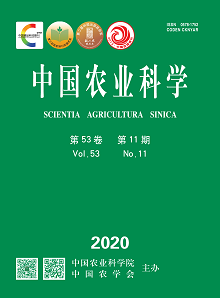【Objective】 The comprehensive evaluation of the agronomic traits and quality traits of Shanxi foxtail millet landrace resources were used to analyze the diversity characteristics and distribution laws of Shanxi foxtail millet. The comprehensive analysis of traits of millet germplasm resources provided scientific basis for evaluation and selection of new varieties of foxtail millet resources. 【Method】 The diversity evaluation of 15 traits in 212 Shanxi foxtail millet germplasm resources were carried out. Variation coefficients, Shannon-Weaver Information index cluster analysis, principal component analysis, correlation and regression analysis were comprehensively used to evaluate the relationship of characteristics and select important characteristics. 【Result】 The result showed that diversity indexes range of 212 Shanxi foxtail millet germplasm resources was 0.92-2.15, and all of them was greater than 1.00 except of grain color (GC); Variation coefficients ranged from 3.35%-38.66%, large variations were found in the traits of plant height (PH), panicle length (PL), stem length (SL), stem diameter (SD), panicle diameter (PD), stem node number (SNN), spike number (SN), grain number per spike (GNS), single spike weight (SSW), spike grain weight (SGW), thousand-grain weight (TGW), amylase/amylopectin ratio, and GC. The less variation was showed in starch and protein. Shanxi millet landrace were divided into 3 groups by cluster analysis, the first group was northern varieties from Datong and Shuozhou, the second group central varieties from Yangquang, Taiyuan, Jinzhong and Yuci, the third group southern varieties from Linfen and Yuncheng; the clustering was consistent with their geographical distribution. The mean value was higher in the traits of SSW, SGW, and TGW in northern varieties. The varieties were more abundant in the traits of GNS, SSW, TGW, protein, starch, and amylase/amylopectin ratio in the southern varieties. Principal component analysis showed that the variation cumulative contribution rate of the first nine principal components was accounted for 89.26%. The average F value from the comprehensive evaluation of traits of 212 Shanxi foxtail millet germplasm resources was 0.521. Huanggeda is the highest (0.709), and Niumaohuang is the lowest (0.315). The correlating analysis between the 15 traits and F value showed that the phenotypic traits (PH, PL, SL, SD, PD, SNN, SN, GNS, SSW, and SGW) were significantly correlated with the F value. The ratio of amylase/amylopectin was also significantly correlated with the F value. Nine traits, including PH, PL, SL, SN, GNS, SSW, protein, amylase/amylopectin ratio, and GC, were selected out as evaluation indexes by stepwise regression analysis. 【Conclusion】 Shanxi foxtail millet landrace resources presented large phenotypic diversity. Cluster analysis can divide Shanxi millet germplasm resources into three groups, southern varieties, central varieties, and northern varieties. The results of the division and geographical sources coincide. The amylase/amylopectin ratio can be used as an index for the evaluation of Shanxi foxtail millet germplasm resources. The variation of the southern varieties in Shanxi presented higher level of phenotypic diversity, which can be used as a resource base for the quality and characteristic breeding of the millet.









